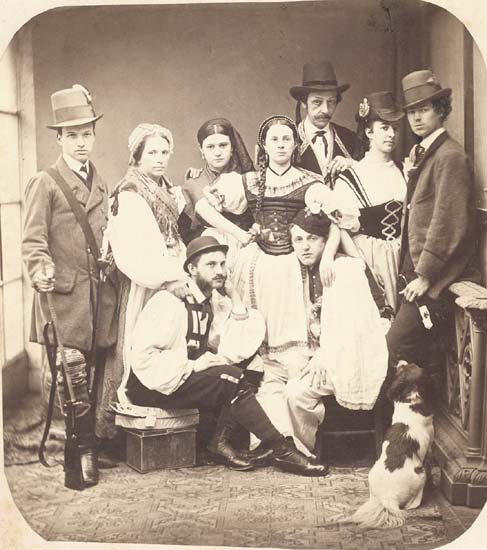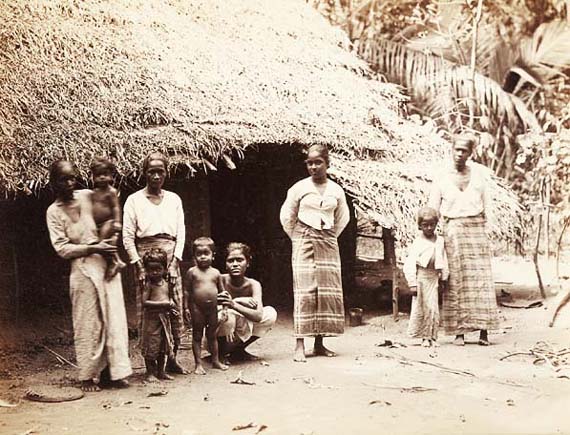While ethnographic photography is strictly speaking, photography used for scientific/anthropological purposes to identify characteristics of native types (often indigenous), it has taken on much broader meaning over the years. Today's collector of ethnographic photography simply looks for images of people native to the region dressed in the typical attire of that area. Some collect such images from particular geographic areas, such as India, China or Japan. Others collect the broader genre of ethnographic photography, preferring to focus on the images themselves. Some collect for special insight into the daily life of these subjects and cultures.
The beauty of some of the native costumes and jewelry, added to unusual tattoos, scarring and other body art offer intriguing and sometimes even horrifying views into the daily life of such societies.
Like Edward Curtis with the American Indian, many of the 19th-century photographers offered a more biased view of their subjects--some glorifying them and others denigrating them.

Gustave de Beaucorps -- Two Algerian Women
Some photographs are simple and straightforward, others more elaborate. Each has its own appeal. Portraits which focus just on the subject can be a learning experience, but placing people in context also can be helpful to understand their culture and ways.
Many of such photographers are anonymous, but others achieved greater notoriety. Felice Beato photographed people in Turkey, the Crimea, India, Borneo, China, Korea and Japan. Felix Jacques Moulin traveled to Algeria with three tons of equipment and glass plates to photograph the local populace (and their French conquerors, who had exterminated a third of the population to capture and subdue Algeria), as did Gustave de Beaucorps.
While many of these images focused on more exotic locals, such as the India subcontinent, the Middle East, Africa and Asia, some addressed less understood groups and cultures more close to home. The grungy Pifferari, who populated the Italian area of Paris in the 1850s-1870s, were favorite subjects of many of the finest of that city's studio photographers, including Charles Negre, Désiré François Millet, Gustave Le Gray, Alphonse Disderi, Emmanuel Mangel du Mesnil and Alfred Lepetit--among others. Often these ethnographic photographs would be used by artists for static painting models.
Ethnographic photographs began with the very beginning of photography itself. There are examples in the media of daguerreotype, calotype, ambrotype and other early processes--many shown in this exhibit.
Exhibited and Sold By
Contemporary Works / Vintage Works, Ltd.
258 Inverness Circle
Chalfont, Pennsylvania 18914 USA
Contact Alex Novak and Marthe Smith
Email info@vintageworks.net
Phone +1-215-518-6962
Call for an Appointment














Share This